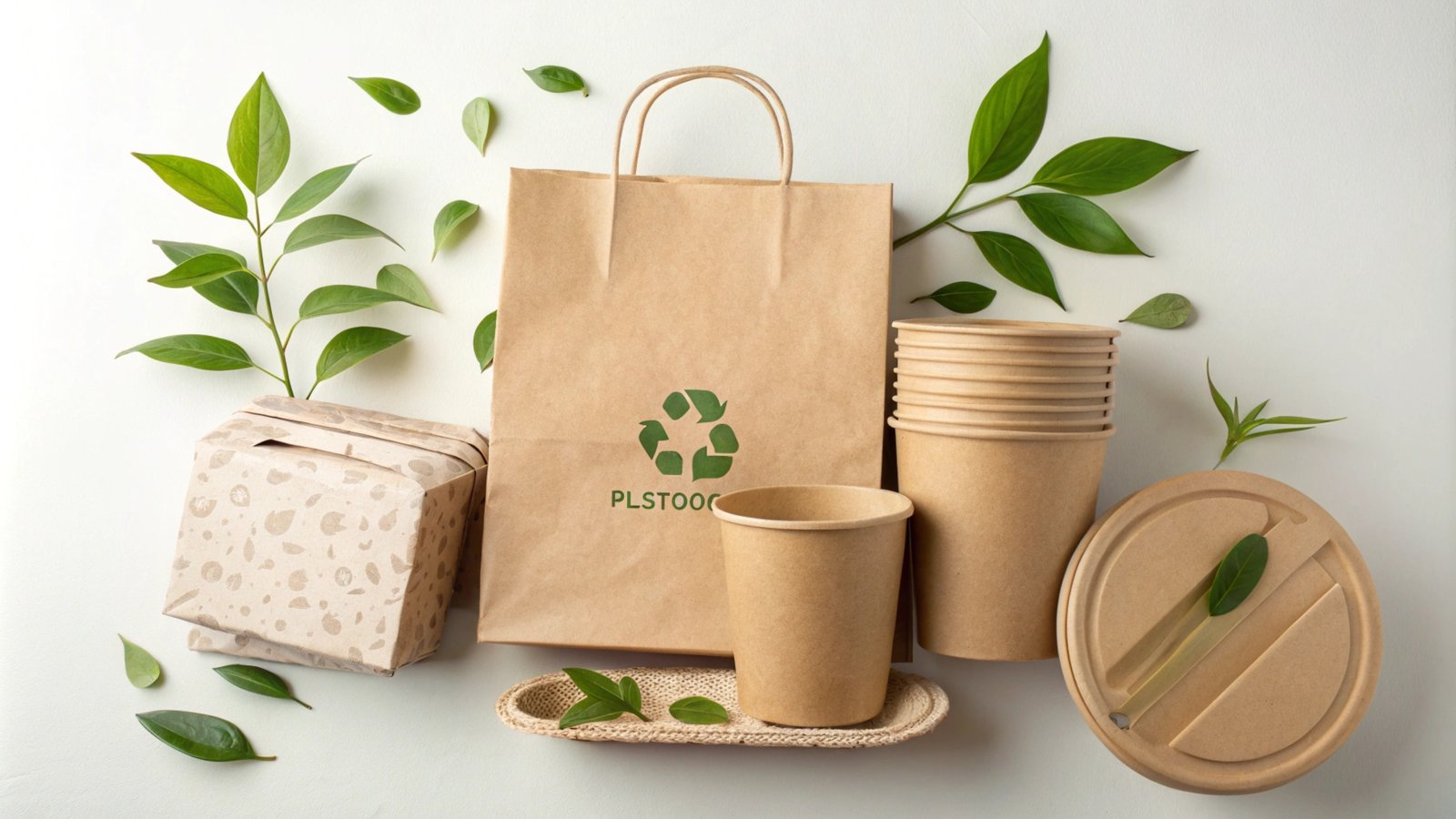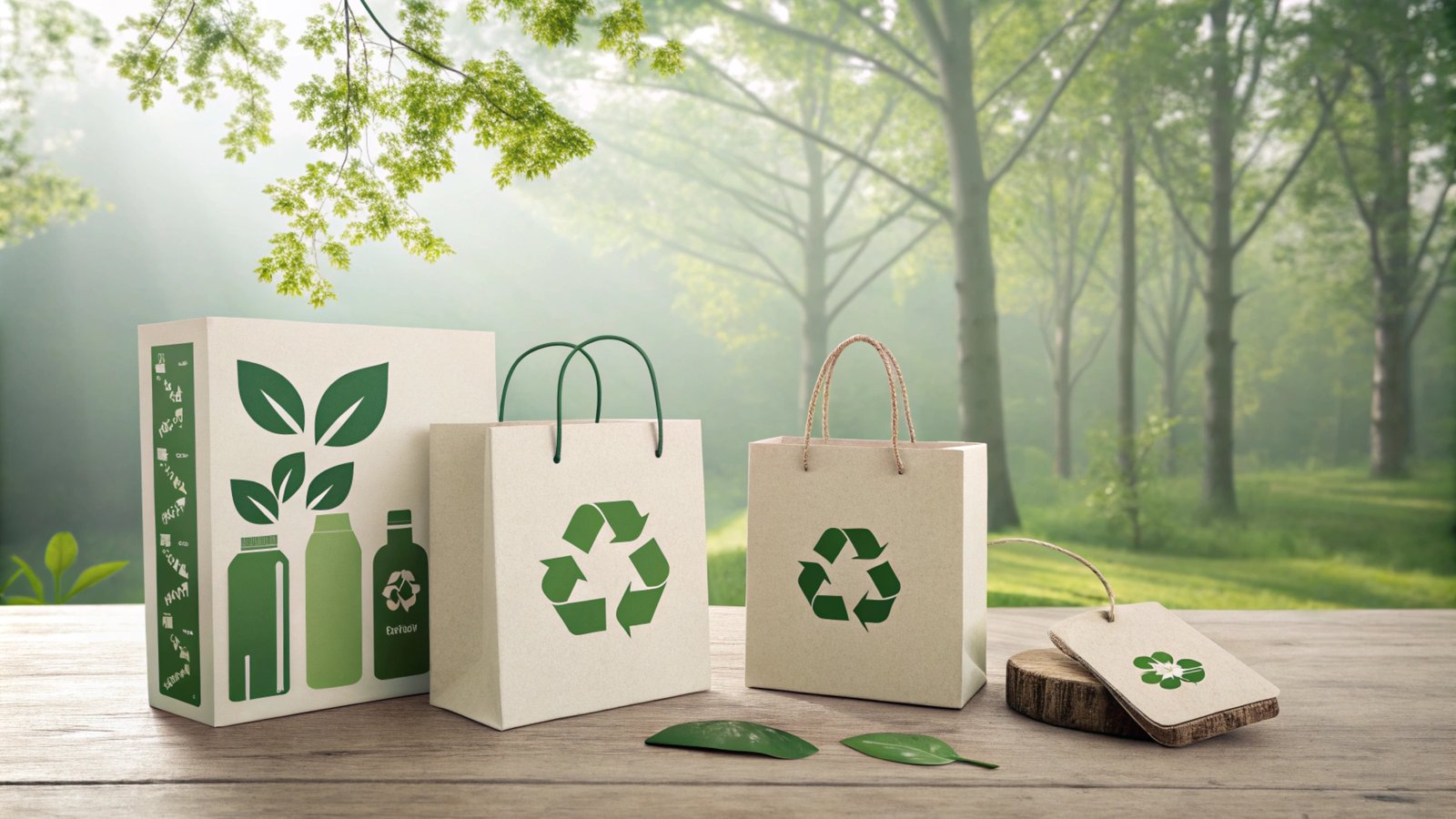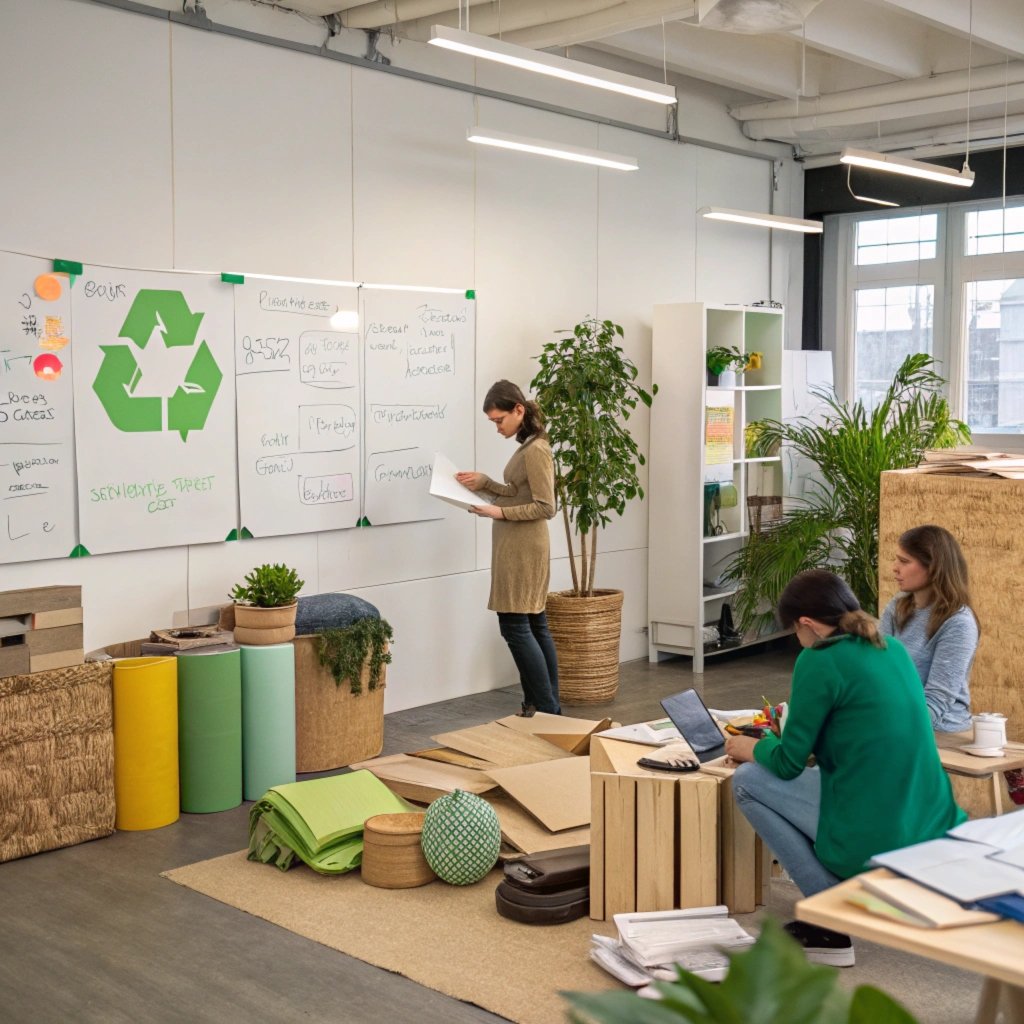 "Forest Pathway"
"Forest Pathway"
As the world faces increasing environmental challenges, businesses are being urged to reconsider their impact. Packaging, a key part of the product journey, is a major contributor to waste. But here’s the good news: switching to eco-friendly materials can make a difference. This shift is not only beneficial for the planet but also enhances your brand image and consumer loyalty.
Eco-friendly packaging is more than just a trend—it’s becoming essential. Companies that embrace sustainability are positioning themselves for the future.
This transition, though, can seem daunting at first. How do you ensure your packaging is truly eco-friendly? Let’s delve into how businesses like mine have made this shift and the ways you can get started too.
[Table of contents]
How do you make eco-friendly packaging?
Making the switch to eco-friendly packaging is easier than you might think, but it requires careful planning. First, you need to understand what makes packaging eco-friendly. This involves using materials that are biodegradable, recyclable, or reusable, as well as choosing production methods that have minimal environmental impact.
 Stylish Living Room
Stylish Living Room
Eco-friendly packaging involves choosing materials like recycled paper, cardboard, or biodegradable plastics. It's a step-by-step process that begins with understanding your needs.
In my experience, the first step is analyzing the product you’re packaging. If it’s delicate, you might opt for a biodegradable plastic or a sturdy recycled cardboard box. But if it's lightweight, paper or plant-based materials may suffice. The goal is to reduce waste without compromising on protection or presentation.
Dive deeper: Choosing the Right Materials
The real challenge is selecting the right materials. Here are a few options:
- Recycled Paper and Cardboard: These materials are easy to recycle and offer a wide range of uses in packaging. From boxes to labels, they’re versatile and eco-friendly. The key is ensuring the recycled paper comes from a sustainable source.
- Biodegradable Plastics: These are made from renewable plant-based resources, such as corn starch. Unlike traditional plastic, biodegradable plastics decompose over time, leaving little to no environmental impact.
- Glass and Metal: While these materials are more energy-intensive to produce, they are 100% recyclable and can be used repeatedly without degrading their quality.
When transitioning to eco-friendly packaging, it’s also crucial to consider the overall carbon footprint of production. Choose manufacturers who use energy-efficient processes and sustainable sourcing.
Why should packaging be eco-friendly?
Eco-friendly packaging isn’t just a moral obligation; it's a business necessity. Consumers are more environmentally conscious than ever before, and they prefer to support brands that share their values. In fact, studies show that 74% of consumers are willing to pay more for sustainable products.
 Delicious Pizza
Delicious Pizza
By adopting eco-friendly packaging, you’re not only helping the environment but also boosting your brand’s reputation. Consumers are increasingly drawn to sustainable brands.
From reducing carbon emissions to minimizing waste, the benefits are clear. Eco-friendly packaging can help reduce the environmental impact of your products, but it can also lead to cost savings. With the growing demand for sustainable products, it can open up new markets for your brand, especially in regions like Europe and North America where sustainability is highly valued.
Dive deeper: Understanding Consumer Preferences
A big part of the push for eco-friendly packaging comes from changing consumer preferences. The demand for green packaging solutions is growing because people are more aware of the environmental impact of their purchases. They want to make a positive impact, and that starts with the brands they buy from.
As an example, one of my clients—an importer of cosmetics—noticed a significant increase in sales after switching to eco-friendly packaging. Consumers appreciated the change, and many even mentioned it in their reviews, noting the brand's commitment to sustainability. This shows that eco-friendly packaging doesn’t just benefit the environment; it can boost your bottom line.
What are the eco-friendly ways of packaging?
When we talk about eco-friendly packaging, it’s important to explore the different methods available. The right choice will depend on your product, your target market, and your brand’s overall sustainability goals.
Dive deeper: Sustainable Packaging Options
- Plant-Based Packaging: Made from renewable resources like sugarcane or corn, this packaging breaks down naturally and is compostable. This is ideal for products like food, cosmetics, and even electronics.
- Minimalist Packaging: Reducing packaging to the bare essentials is a simple yet effective way to minimize waste. By using smaller amounts of material, you reduce your carbon footprint and contribute to waste reduction.
- Edible Packaging: While still a novelty, edible packaging is a creative solution for certain industries, particularly food. Made from seaweed or rice, these wrappers dissolve in water, leaving no waste behind.
There are also innovative ways of designing packaging to ensure it’s reusable. For example, my company’s gift boxes are designed not just for one-time use but as a storage solution, ensuring that they’re reused rather than disposed of.
H3: Creative Ways to Reduce Waste
Consider these packaging ideas that reduce waste while maintaining functionality:
- Reusable Packaging: Think about packaging your products in durable bags or containers that your customers can repurpose.
- Packaging as a Service: For certain industries, companies are beginning to offer packaging as a service. This means customers can send back their packaging for reuse.
How to start an eco-friendly packaging business?
Starting an eco-friendly packaging business can be a rewarding venture, but it requires a strategic approach. The first step is understanding the market. Who are your potential customers, and what are their packaging needs? Are they looking for biodegradable packaging, reusable solutions, or perhaps minimalist designs?
 Minimalist Workspace
Minimalist Workspace
An eco-friendly packaging business must start by understanding market demand and sourcing sustainable materials. It’s also vital to establish strong partnerships with environmentally-conscious manufacturers.
Here’s a step-by-step approach:
- Research the Market: Identify industries and consumers who are most likely to demand eco-friendly packaging. Target sustainable brands or environmentally conscious startups.
- Source Eco-Friendly Materials: Work with suppliers who provide recycled or renewable materials. Verify their certifications and practices to ensure they align with your values.
- Offer Custom Solutions: Many brands need custom packaging solutions that align with their product and values. Offering bespoke packaging can set your business apart.
- Invest in Green Manufacturing: Ensure that your production processes are energy-efficient, use non-toxic inks, and are as waste-free as possible.
Dive deeper: Sustainability in Business Practices
Starting an eco-friendly packaging business means adopting green practices at every level of your operation, from production to shipping. This involves ensuring that your supply chain is as sustainable as your products. Many packaging companies are now incorporating renewable energy into their production processes or using recycled water systems. The key is ensuring your eco-friendly goals extend throughout the entire business model.
Conclusion
In today’s market, eco-friendly packaging is no longer just an option; it’s a necessity. By shifting to sustainable materials and practices, you not only reduce your environmental impact but also strengthen your brand’s reputation and attract new customers. The future is green, and businesses that adapt early will be the ones leading the way.
Switching to eco-friendly packaging may seem like a challenge at first, but with careful planning and the right partners, it’s a transition that’s both possible and profitable. So, are you ready to make the change?

